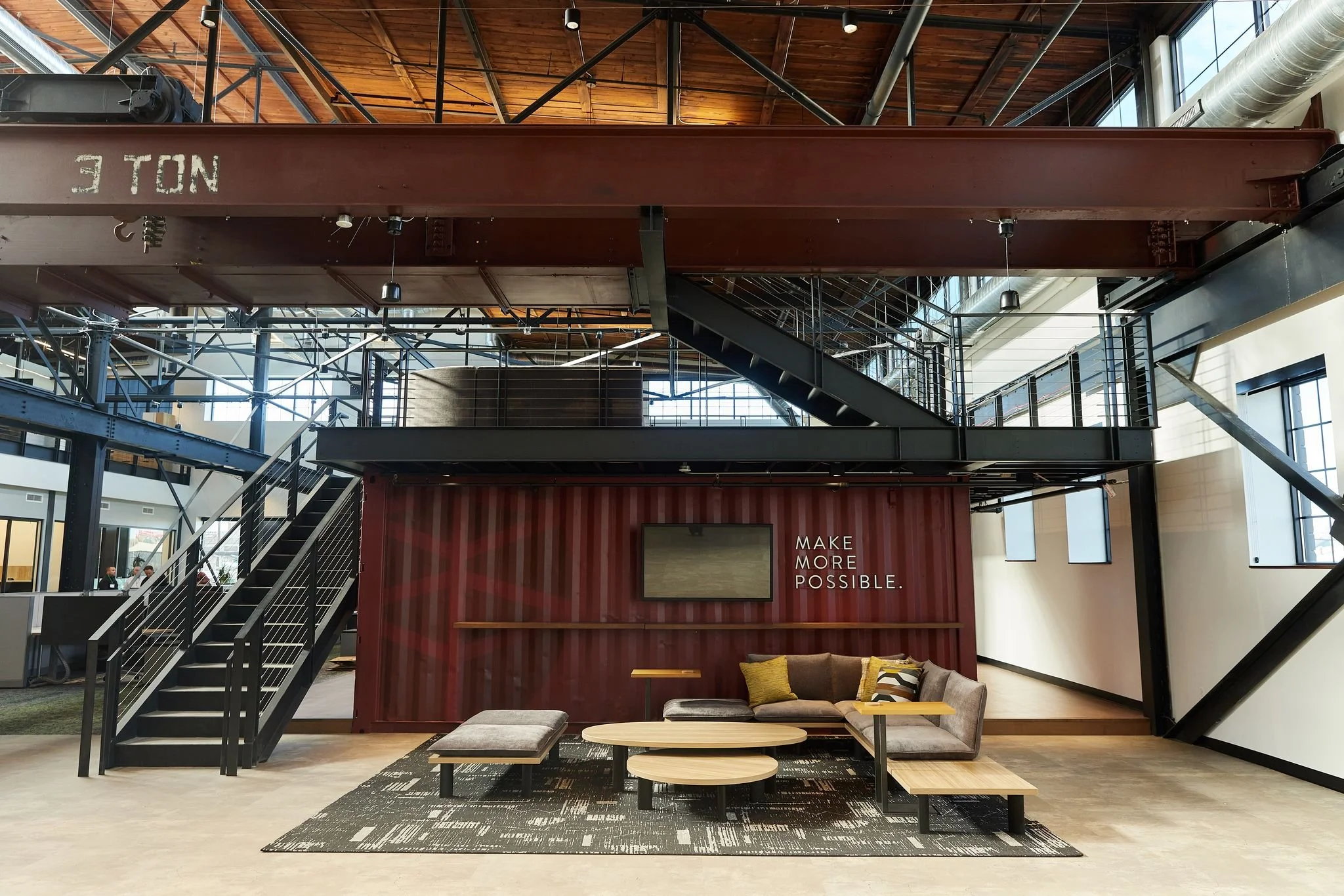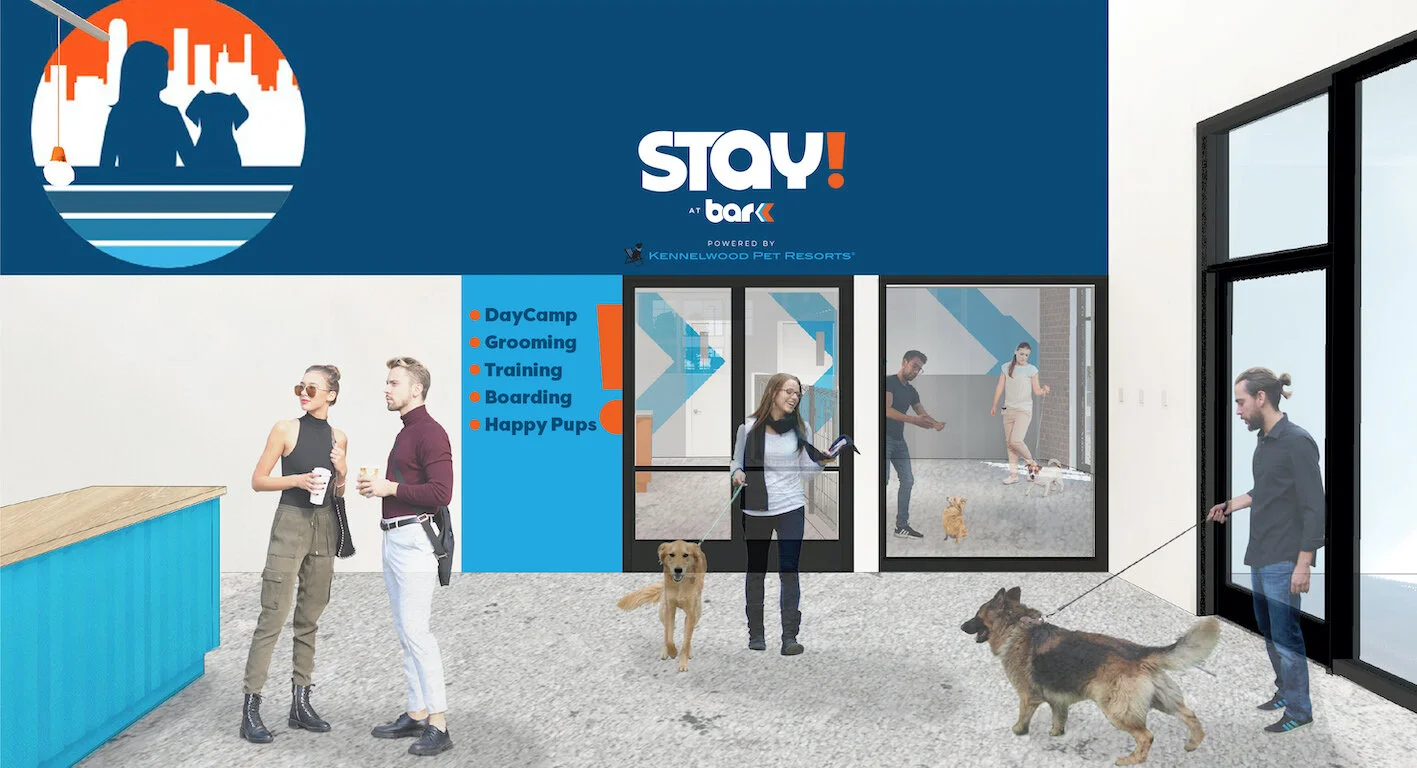Feature image: Rendering of The Armory credit: O'Toole Design.
Insatiable appetite for commercial real estate continues
The St. Louis-area CRE market is still hungry for more, according to Commercial Real Estate Women (CREW)-St. Louis’ “Industrial Outlook” panelists.
Christie Brinkman, director, design build, Castle Contracting, LLC, moderated the March session as panelists, Cara Weber, Wakeel Rahman and Christy Campbell discussed recent pandemic-related challenges and predictions going forward.
Cara Weber, vice president, business recruitment, Missouri Partnership, said the Partnership is a public/private entity funded by the State of Missouri’s Department of Economic Development and the Hawthorn Foundation to focus on attracting new businesses to the state by functioning as a sales tunnel that includes marketing, business development and project management.
“Our Raise the Bar program is identifying sites for development so the region can control its own destiny,” Weber said.
In the past five years, the Partnership has opened 615 projects and lost 142. Wins by industry include advanced manufacturing, energy solutions, food solutions, logistics and distribution, and office-based space.
“Expansion is incredibly important — about 80 percent of new jobs are coming from expansion,” she said. “I’m excited about the level of project flow so far this year, which has been mostly industrial. We’re seeing a lot of searches for existing buildings, but don’t have a lot available.”
“Retention (of businesses) is the key component. Attraction is our wheelhouse,” Weber said. “We’re getting more opportunities from big OEM businesses.”
Available CRE space is a factor in lost projects, along with whether a business has an existing presence in the area and concerns about logistics, incentives, available workforce, business costs and infrastructure, according to Weber.
“What’s great about Missouri is our transportation resources: rail and river,” she said.
The CRE profession is faced with “trying to meet an almost insatiable demand for commercial real estate,” said Wakeel Rahman, vice president, NorthPoint Development. “The market is very healthy. Retail stepped up to take a lot of space to compete with Amazon.”
E-commerce is driving the market from “just in time” (JIT) to “just in case” (JIC), and the ratio of inventory to sales in the supply chain should increase.
Rahman warned that national headwinds to watch include continued supply chain delays and cost increases for materials and construction, NIMBYism (Not In My Back Yard) attitudes toward industrial properties, entitlement and permitting, and warehouse fatigue.
“St. Louis is still one of the tightest markets,” he said. “Looking forward, we will see an increase in automation and more-affordable systems; new geographies where companies can build; and spending more on infrastructure, which means good things for our industry because it creates improved access.”
The preliminary 2022 first-quarter numbers are encouraging, said Christy Campbell, brokerage associate, Cushman & Wakefield: “2.2 MSF of positive net absorption and a 2.9 percent vacancy rate — the lowest ever.” Asking rates are increasing in response, she said. “While St. Louis has always been a stable market, 2021 was a record year and we’re already halfway there in 2022, with 8.3 MSF under construction among 26 buildings with only one that’s tax-abated.”
Royal Canin, Ryder and Imperial Dade are leading the field; Duke Realty has completely left the market.
The largest Q1 investment sales have been Duke to Exeter Property Group, Inc., TriStar Properties to Apollo Global Management and Duke to Pontegadea Inversiones as cap rates continue to compress.
“Trends are an upward pressure on rental rates and annual increases, changes in marketing strategies with less and less advertised rates, increased emphasis on e-commerce, and the move from JIT to JIC,” Campbell said.
In terms of some of the issues that Rahman noted, “The most common misconception about the industrial sector is negative environmental impact of large facilities on a community; but in reality, there’s no stress on schools, there are new jobs, and LEED buildings with high-tech electronics-driven systems are environmentally friendly,” she said.
“Industrial tenants are looking for buildings with 30- to 40-foot clear heights because of racking and are making heavy trailer parking demands,” Campbell said. “Land prices are increasing across the country, although St. Louis is lagging behind the coasts.”
Upcoming CREW-STL events include Coffee with CREW, April 1; Membership Hike, April 6; Bar K & Green Street Real Estate Ventures Happy Hour and tour, April 12; and Dine Around, April 19. To register or for more event details, visit https://crewstl.org/events.










